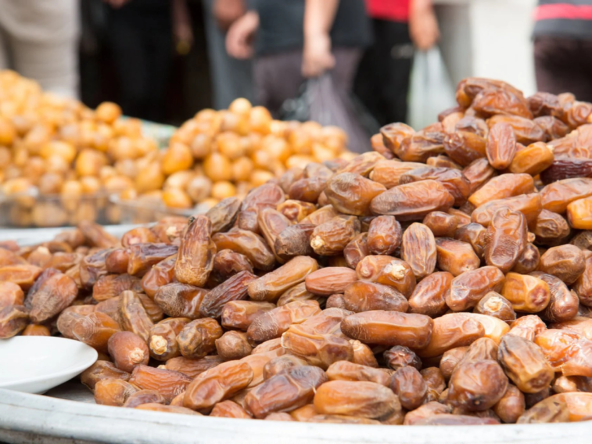Arabic gum, also known as gum acacia, is a valuable natural commodity derived from the hardened sap of the Acacia senegal and Acacia seyal trees. It plays a crucial role in various industries, including food, pharmaceuticals, cosmetics, and textiles. As global demand for Arabic gum continues to grow, price fluctuations remain a significant concern for producers, traders, and end-users. Understanding the economics behind Arabic gum, including factors affecting its pricing and demand, is essential for industry stakeholders.
Factors Influencing Arabic Gum Prices
Arabic gum prices are subject to fluctuations influenced by multiple economic, environmental, and geopolitical factors. Key elements that impact pricing include:
1. Supply Chain Challenges
- Arabic gum is predominantly sourced from the Sahel region of Africa, with Sudan, Chad, and Nigeria being the leading producers. Political instability, conflicts, and logistical challenges in these regions can disrupt supply and increase prices.
- Poor infrastructure and limited access to processing facilities also contribute to inconsistent supply, affecting market prices.
2. Climate Conditions
- The Acacia trees from which Arabic gum is harvested are highly sensitive to climatic conditions. Prolonged droughts or excessive rainfall can reduce tree productivity, leading to supply shortages and price spikes.
- Climate change and desertification pose long-term threats to the sustainability of Arabic gum production.
3. Global Demand Trends
- The food and beverage industry remains the largest consumer of Arabic gum due to its use as a natural emulsifier, stabilizer, and thickening agent in products like soft drinks, confectionery, and dairy items.
- The pharmaceutical and cosmetic industries also drive demand, as Arabic gum is used in medicinal formulations, skincare products, and dietary supplements.
- With increasing consumer preference for natural ingredients, demand for Arabic gum has surged, sometimes outpacing supply and driving up prices.
4. Government Policies and Trade Regulations
- Export restrictions, tariffs, and government-imposed levies in producing countries can directly affect Arabic gum prices.
- In contrast, trade agreements and international partnerships that facilitate smoother exports can help stabilize prices.

5. Speculation and Market Dynamics
- Like other commodities, Arabic gum prices can be influenced by speculation and market trends. Traders and investors who anticipate supply disruptions may drive up prices in response to perceived shortages.
- The role of middlemen in the supply chain can also contribute to price volatility, as multiple layers of transactions add to costs before the gum reaches the final consumer.
Strategies to Stabilize Arabic Gum Prices
To ensure stable pricing and a sustainable supply of Arabic gum, various strategies can be implemented:
- Investment in Sustainable Agriculture
- Encouraging agroforestry practices and tree planting initiatives can enhance gum production and mitigate supply shortages.
- Supporting farmers with better harvesting techniques and fair trade initiatives can lead to a more reliable supply chain.
- Improved Supply Chain Infrastructure
- Enhancing transportation networks, storage facilities, and processing plants in producing countries can reduce wastage and ensure a steady supply.
- Direct partnerships between producers and international buyers can help eliminate unnecessary intermediaries, reducing price markups.
- Climate Adaptation Strategies
- Research into drought-resistant Acacia tree varieties and sustainable land management practices can help mitigate climate-related supply risks.
- Encouraging regenerative agricultural methods can help preserve soil health and improve gum yields.
- Market Diversification and Value Addition
- Expanding the use of Arabic gum in emerging industries, such as plant-based foods and biodegradable packaging, can create new revenue streams and stabilize demand.
- Processing Arabic gum into high-value products locally can enhance earnings for producing countries and reduce price instability.
Conclusion
The economics of Arabic gum are shaped by a complex interplay of environmental, geopolitical, and market forces. While price fluctuations are inevitable, strategic interventions such as sustainable production, improved logistics, and market diversification can help stabilize the industry. At Ajigo Farms Ltd, we remain committed to supporting the growth of Arabic gum production through responsible sourcing and sustainable agricultural practices. By understanding the factors driving price fluctuations and demand, stakeholders can make informed decisions to ensure the long-term viability of this valuable natural resource.
Ajigofarms is a reliable global agricultural purchase sourcing with profound expertise in the manufacturing, and exportation of food crops. We are tested, and trusted suppliers of all kinds of cash crops and food crops. Our constant supply chain solution makes exporting easy, quick, and safe, we are identified with timeliness and meeting up with deadlines. Regardless of the region you are located in worldwide, you can reliably order your Agric products and be rest assured of successful delivery.




